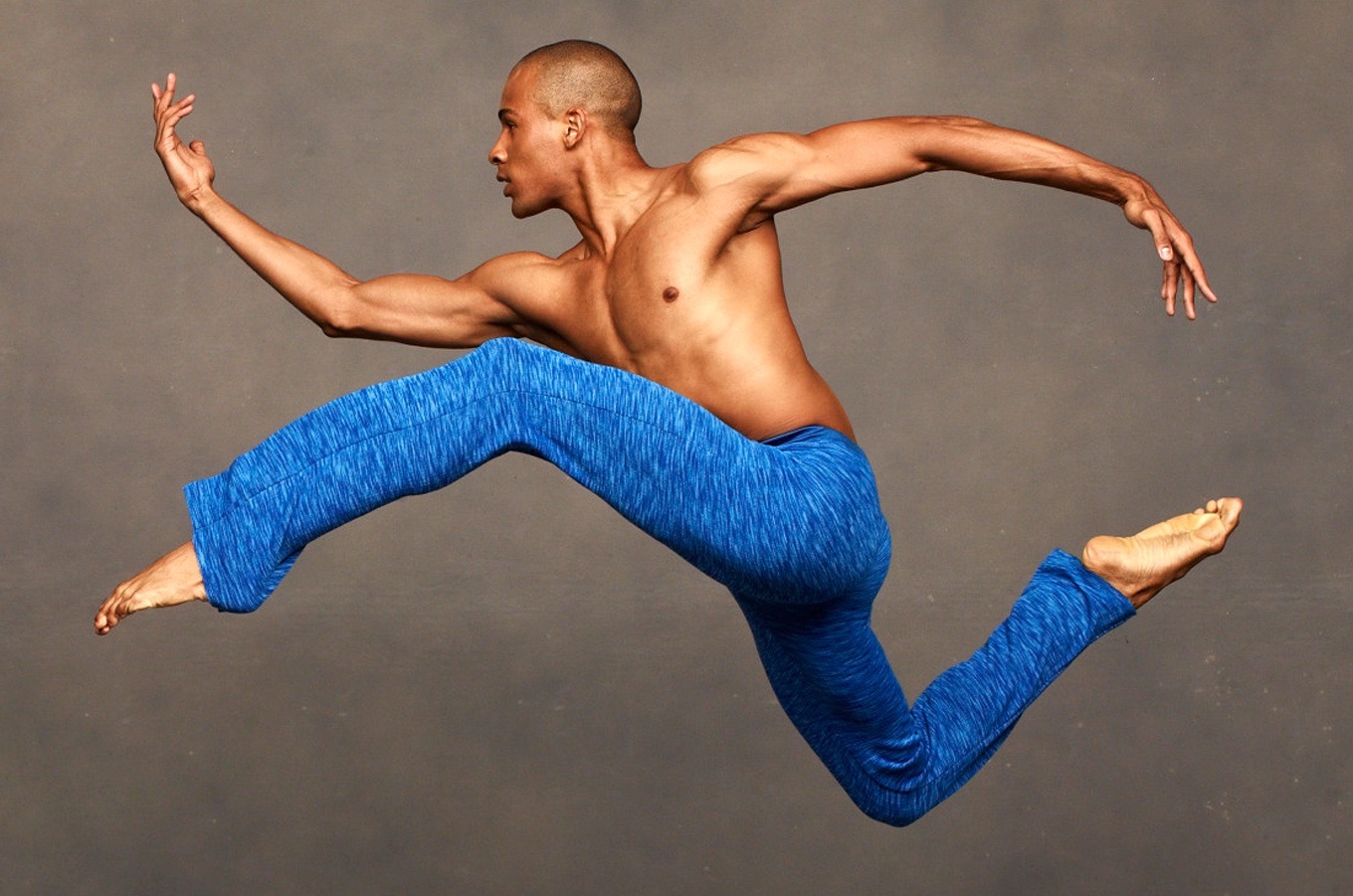Glenn Allen Sims
Among the diverse range of 25 works performed by the Ailey company this season is Uprising, an intensely powerful work created by the acclaimed Israeli-born choreographer Hofesh Shechter. New York Times critic Debra Craine wrote that “there isn’t a nerve left untouched” by the work, which has been described as evoking the aggressive and vulnerable facets of men. “It felt like unleashing a dog into the park,” said Shechter in an interview describing the creative process. In creating the all-male ensemble piece, he said he wanted to explore the limits of the dancers’ physicality. Ailey company members Glenn Allen Sims and Marcus Jarrell Willis shared with us their experiences preparing for the challenging piece.
Sims, who is celebrating his 17th year with the Company this season, said that all of his life experiences prepared him for the work. “I grew up in Long Branch, New Jersey and I had to defend not only myself, but my younger brother. I'm a husband and I've had to defend my wife. Basically, when we are pushed to a limit where aggression begins to show itself, the aggression that manifests from that is a natural reaction. So as an artist, you are compelled to highlight another aspect of yourself, a true side of who you are and not some put-on façade of ‘I'm an aggressive man.’” Willis said aggression is just one of male characteristics that Shechter was able to capture in his work. “I think the most prominent is the sense of humanity as a man,” he said. “The strength [as well as the] vulnerability of these men pave the way to a journey for both the artists and the audience. Understanding that I am one of the men on this journey has allowed me to embody the concept of the work.”
The Company in Hofesh Shechter's Uprising. Photo by Paul Kolnik
Shechter originally choreographed and set Uprising on his own company in 2006, relying heavily on improvisation from his dancers to develop the work. Because of this, what audiences will see from Ailey this season will not exactly resemble the original premiere of Uprising from years ago. Bruno Guillore, a member of Shechter’s original cast, reset the work on Ailey and allowed the dancers some artistic license while still staying true to the integrity of Schechter’s choreography. The improvisation is confined to specific moments determined by Shechter, a process Guillore has described as an exploration of “calculated risks.” The dancers, he said, “let themselves go; they are quite wild in the small moments of improvisation. That creates the excitement. It looks like a lot of the movement is random, but it’s not; in fact, the only parts that are improvised are short solos, maybe two counts of eight at most.”
Willis noted that the emphasis on improvisation made him feel more connected to the work. Uprising, then, is not being “recreated” by Ailey dancers, but rather “customized,” he said. Sims agreed, stating that Bruno’s use of improvisation in rehearsals gave the dancers not only the “artistic license to explore [their] own creativity, but [also] an opportunity to delve deeper into the work.”
Despite the fact that Uprising has previously been performed by other companies, Sims and Willis did not try to mimic other interpretations. Willis noted that his experience learning the piece was “a mixed, yet unique” one, as he had seen the work performed before. “I was more captivated by the work as a whole, so I didn't try to dissect or analyze it,” he said. “Apart from the mood of the piece and what I felt after seeing it, I brought myself into the studio as a blank canvas when we began. The information and direction from Bruno has been enough, and as a result the experience I have encountered thus far has revealed itself on its own.” Added Sims, “I’d rather take the steps taught to me in the studio and allow them to teach me how I should interpret the movement, thus making it my own, and therefore making it true for me.”
The Company in Hofesh Shechter's Uprising (Marcus Jarrell Willis pictured in red). Photos by Paul Kolnik
Sims said the work excites him, noting it “not only demands much of your own physical strength, but the vulnerability to rely on someone else’s strength to pull you through.” Willis said he eagerly awaits the development of the work over time. “The journey of where this will take me each time we perform and experience the work is something I'm looking forward to.”
Look out for Sims, Willis, and the rest of the Ailey company as they present 39 thrilling performances this season at New York City Center, now through January 4. www.alvinailey.org/citycenter
Interview conducted by Mykel Nairne.
